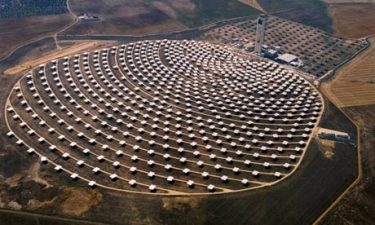America ran out of steel when China built its world expo. The world ran out of wood during the pandemic, and so many other aspects of the supply chain has been disrupted. But what about the minerals that are essential for building electric cars or imaging equipment to diagnose disease? We don’t want to run out of those. While there is no worldwide list of essentials, the American Government has tasked a geological group to make a list of peak minerals – basics that industries could not live without.
The American group, the US Geological Survey (USGS) was charged by the Federal Government of the United States to devise a list of critical materials and minerals that help define the American economy. Some of these minerals are in short supply, some are expensive and some are simply toxic so need to be recycled or handled respectfully at the end of a product’s life.
If you are a corporate decision maker, environmentalist, banker or a CRO, browse this list to understand supply chains and greening every inch of our lives from the medical devices we use to the airplanes we fly in.
“The USGS’s critical minerals list provides vital information for industry, policymakers, economists and scientists on the most important minerals when it comes to US supply chains,” says Tanya Trujillo, Assistant Secretary of the Interior for Water and Science.
“The statistics and information are crucial to understanding America’s vulnerability to disruptions in the supply of critical minerals, including data on the worldwide supply and demand for minerals and materials essential to the U.S. economy and national security.”
Under the Energy Act of 2020, a “critical mineral” is defined as a non-fuel mineral or mineral material essential to the economic or national security of the US, as well as the supply chain, which is vulnerable to disruption.
Critical minerals are also characterized as serving an essential function in the manufacturing of a product, the absence of which would have significant consequences for the economic or national security.
In 2018, the Department of the Interior worked in consultation with other cabinet agencies to develop the nation’s first list of critical minerals in response to Executive Order 13817.
The 50 critical minerals running your life
-
Aluminum, used in almost all sectors of the economy
-
Antimony, used in lead-acid batteries and flame retardants
-
Arsenic, used in semi-conductors
-
Barite, used in hydrocarbon production.
-
Beryllium, used as an alloying agent in aerospace and defense industries
-
Bismuth, used in medical and atomic research
-
Cerium, used in catalytic converters, ceramics, glass, metallurgy, and polishing compounds
-
Cesium, used in research and development
-
Chromium, used primarily in stainless steel and other alloys
-
Cobalt, used in rechargeable batteries and superalloys
-
Dysprosium, used in permanent magnets, data storage devices, and lasers
-
Erbium, used in fiber optics, optical amplifiers, lasers, and glass colorants
-
Europium, used in phosphors and nuclear control rods
-
Fluorspar, used in the manufacture of aluminum, cement, steel, gasoline, and fluorine chemicals
-
Gadolinium, used in medical imaging, permanent magnets, and steelmaking
-
Gallium, used for integrated circuits and optical devices like LEDs
-
Germanium, used for fiber optics and night vision applications
-
Graphite , used for lubricants, batteries, and fuel cells
-
Hafnium, used for nuclear control rods, alloys, and high-temperature ceramics
-
Holmium, used in permanent magnets, nuclear control rods, and lasers
-
Indium, used in liquid crystal display screens
-
Iridium, used as coating of anodes for electrochemical processes and as a chemical catalyst
-
Lanthanum, used to produce catalysts, ceramics, glass, polishing compounds, metallurgy, and batteries
-
Lithium, used for rechargeable batteries
-
Lutetium, used in scintillators for medical imaging, electronics, and some cancer therapies
-
Magnesium, used as an alloy and for reducing metals
-
Manganese, used in steelmaking and batteries
-
Neodymium, used in permanent magnets, rubber catalysts, and in medical and industrial lasers
-
Nickel, used to make stainless steel, superalloys, and rechargeable batteries
-
Niobium, used mostly in steel and superalloys
-
Palladium, used in catalytic converters and as a catalyst agent
-
Platinum, used in catalytic converters
-
Praseodymium, used in permanent magnets, batteries, aerospace alloys, ceramics, and colorants
-
Rhodium, used in catalytic converters, electrical components, and as a catalyst
-
Rubidium, used for research and development in electronics
-
Ruthenium, used as catalysts, as well as electrical contacts and chip resistors in computers
-
Samarium, used in permanent magnets, as an absorber in nuclear reactors, and in cancer treatments
-
Scandium, used for alloys, ceramics, and fuel cells
-
Tantalum, used in electronic components, mostly capacitors and in superalloys
-
Tellurium, used in solar cells, thermoelectric devices, and as alloying additive
-
Terbium, used in permanent magnets, fiber optics, lasers, and solid-state devices
-
Thulium, used in various metal alloys and in lasers
-
Tin, used as protective coatings and alloys for steel
-
Titanium, used as a white pigment or metal alloys
-
Tungsten, primarily used to make wear-resistant metals
-
Vanadium, primarily used as alloying agent for iron and steel
-
Ytterbium, used for catalysts, scintillometers, lasers, and metallurgy
-
Yttrium, used for ceramic, catalysts, lasers, metallurgy, and phosphors
-
Zinc, primarily used in metallurgy to produce galvanized steel
-
Zirconium, used in the high-temperature ceramics and corrosion-resistant alloys.




